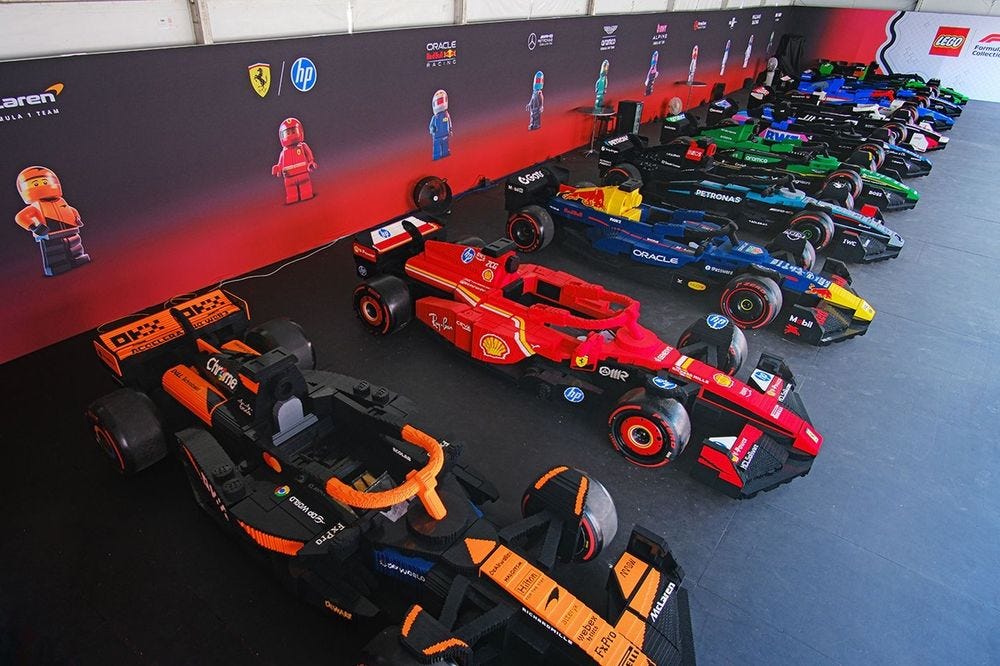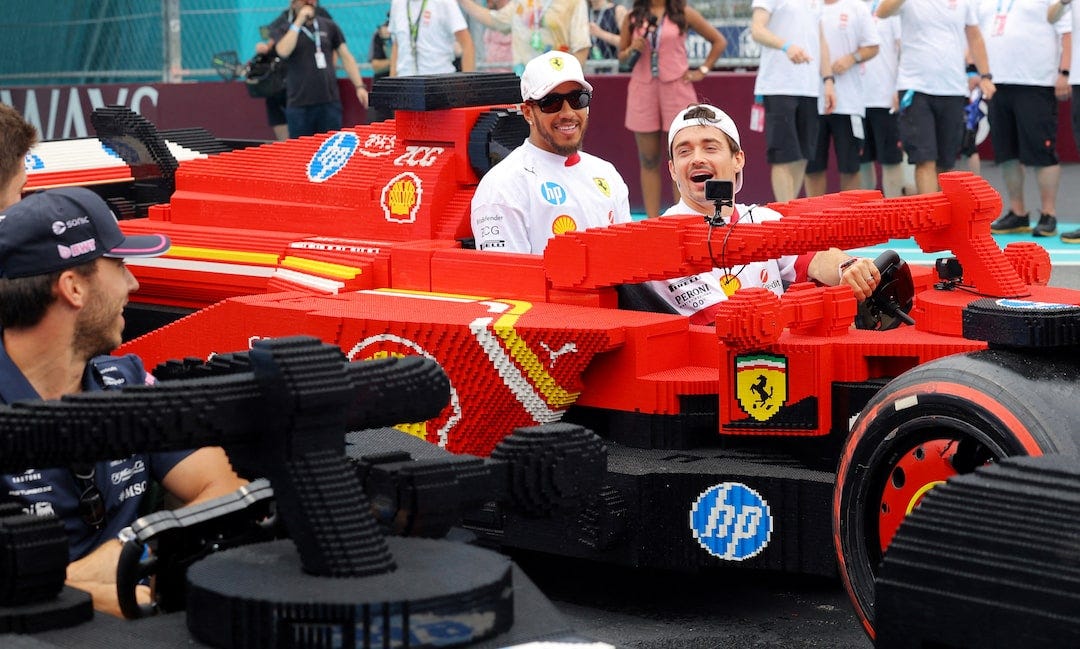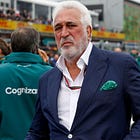How LEGO Made Formula 1 Feel Human
LEGO didn’t build toy cars. They built wonder.
Welcome to Business of Speed.
In case you missed it:
If someone forwarded you this email, consider supporting independent coverage and analysis of the business of Formula 1.
What if the most powerful innovation in Formula 1 this year had nothing to do with speed?
Not a tenth shaved off a lap time. Not a breakthrough in aerodynamics.
But something that made Lewis Hamilton laugh.
That made Max Verstappen crash—on purpose.
That made George Russell drop his iPhone mid-lap.
It wasn’t a new upgrade. It was a reminder that behind the telemetry and the tension, Formula 1 is still a game.
Something completely unserious became the most unforgettable moment of the weekend.
And in Miami, LEGO helped the world’s fastest sport remember how to play.
Formula 1 rarely slows down.
It's a sport of relentless forward motion, billion-dollar engineering, split-second precision, and teams of hundreds chasing marginal gains. But something beautiful happened during the 2025 Miami Grand Prix drivers' parade. The sport eased off the throttle.
Ten life-size F1 cars, built entirely out of LEGO bricks, rolled onto the grid, not as static sculptures, but as functioning vehicles with electric motors, hydraulic brakes, and enough torque to cruise through a lap at a gentle 12 miles per hour. Each one weighed nearly 3,000 pounds and used over 400,000 bricks.
And somehow, during the most curated, competitive environment in motorsport, something completely unserious became the most unforgettable moment of the weekend.
McLaren’s Oscar Piastri called it “insane.”
After nearly two decades of parades, Lewis Hamilton said it was the most fun he’d ever had before a race.
Even Max Verstappen, typically F1’s stoic terminator, grinned like a kid in a toy store.
The grid, if only for a moment, became a playground.
Precision Engineering, Designed for Delight
These weren’t thrown-together PR stunts. The cars were engineered with the same seriousness F1 applies to race strategy.
Each car, built at LEGO’s facility in the Czech Republic, took more than 2,200 hours to assemble. A team of 26 specialists working across design, mechanics, and electronics solved a challenge LEGO usually doesn’t face: accommodating full-sized humans with knees.
The cars ran on 11-horsepower electric motors, had working differentials, and were assembled entirely from commercially available LEGO bricks. There was no glue, no shortcuts.
LEGO was optimizing for delight—and they nailed it.
The Most Human Lap
What looked like a novelty turned into a revelation.
Fans watched the best drivers in the world bump into each other in toy cars. There was no strategy, no penalties, just spin-outs, shunts, and pure chaos. The footage went viral within minutes, generating memes, TikToks, dad texts, reposts, and highlight reels.
And beneath the absurdity was something more profound: for once, the cars didn’t separate the elite from the rest. They made everyone equal.
It was the rarest kind of Formula 1 moment.
The kind that didn’t divide fans by team allegiance or technical debate. It simply made people smile. For once, Formula 1 wasn’t elite. It was human.
The real innovation wasn’t technical. It was emotional.
In a sport always chasing what’s next, LEGO forced a moment of stillness—a reminder of why anyone falls in love with racing in the first place.
Because every world champion was once a kid with a toy car.
Every engineer was once a tinkerer on the living room floor.
And every F1 fan started with wonder, not telemetry or tire strategy.
LEGO didn’t make F1 faster. They made it more real.
Doing so gave the sport something they didn’t know was missing.
Not another performance upgrade.
But a chance to remember where it began.









Perfectly described. Loved it. This line, in particular: "Because every world champion was once a kid with a toy car." Cheers.